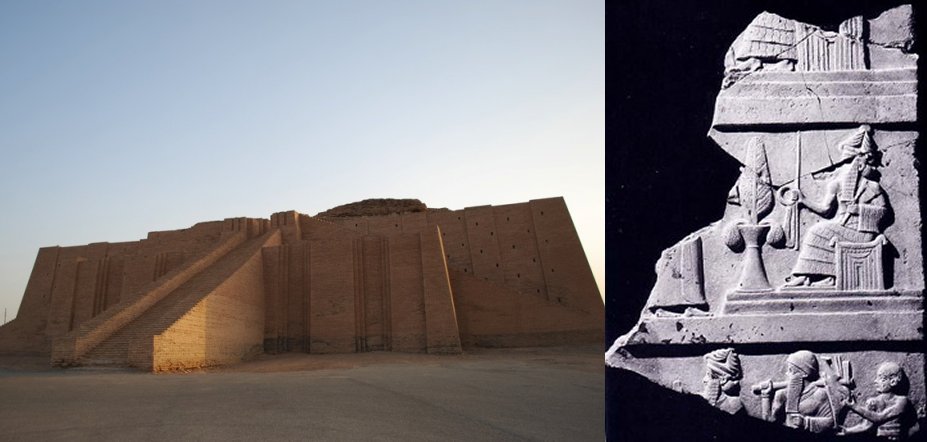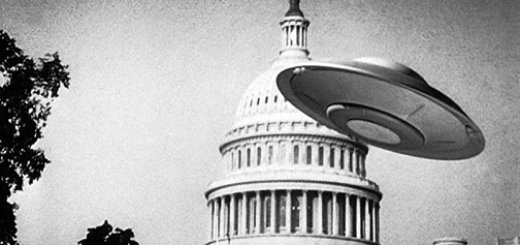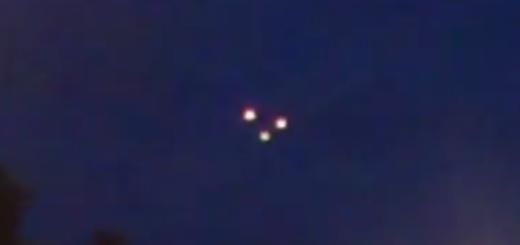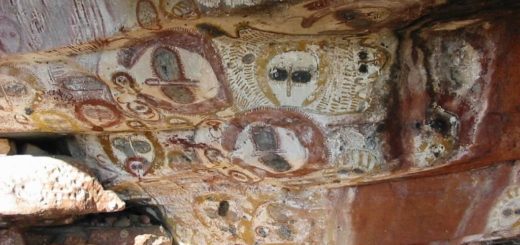Nanna: Mesopotamian Moon God, Lord Of Wisdom And Father Of The Gods
– Nanna was a Moon God in the mythology of the ancient Near East. He was one of the most important gods in the pantheons of ancient Sumer.
In Sumer he was worshipped as god Nanna and his Akkadian name was Su’en or Sin.
The name of the Assyrian moon God Sin is often spelled as En-Zu which means “Lord of Wisdom.”
The origin of the name Nanna and Sin is unknown, but the earliest traces of his name and worship lead to the ancient cities of Ur and Uruk in Sumer.

God Nanna’s symbol was a bull, the result of the horizontal crescent of the waxing moon appearing similar to the horns of that animal. He is depicted on cylinder seals as an old man with a flowing beard and the crescent symbol.
The Early Dynastic god lists, such as Fara SF 1, reveal that the moon God Nanna was extremely important in the pantheon. His name appears immediately after the four leading gods An, Enlil, Inana and Enki.
Sumerians were skilled ancient astronomers who paid close attention to the movements of various celestial objects. It is believed that Mercury was known since at least Sumerian times roughly 5,000 years ago, where it was often associated with Nabu, the god of writing.
A 5,500-year-old Sumerian star map of ancient Nineveh reveals people in Mesopotamian observed Köfels’ impact event. The Sumerians were naturally also interested in observing the Moon’s phases. So, it’s only natural that Moon God Nanna was closely linked to science and astronomy.
In ancient texts, Moon God Nanna is often referred to in terms characteristic of the celestial body. He is described as shining or radiant.
God Nanna was married to Ningal (Great Lady) who was a Goddess of reeds in the Sumerian mythology, and daughter of Enki and Ningikurga.
God Nanna and Goddess Nigal had three children. One of them was Shamash, the God of Sun, truth, justice and healing. The other children were Inanna, also known as Ishtar who was the Goddess of planet Venus and Ereshkigal, the Goddess of the underworld.
Both the moon God Nanna and the Sun God Shamash are associated with issuing laws and verdicts, the determination of destinies, and the announcements of omens.
In our article Is Biblical Mount Sinai Located In Har Karkom Where Mesopotamian Moon God Sin Was Worshipped? the question was raised whether Nanna may have been more important than previously thought.
Biblical archaeologist Emmanuel Anati has discovered evidence suggesting that Biblical Mount Sinai was on a site known as Har Karkom in the Negev of Israel. According to Anati, people who lived in Har Karkom during the Early Bronze Age worshipped the Moon God Sin. Many temples were raised in his honor.
The cult of Moon God Nanna spread to many places and people built temples built in his honor in all the large cities of Babylonia and Assyria.
Copyright © AncientPages.com All rights reserved. This material may not be published, broadcast, rewritten or redistributed in whole or part without the express written permission of AncientPages.com



 Creators of mankind
Creators of mankind Description of “Tall white aliens”
Description of “Tall white aliens” Where they came from?
Where they came from? About hostile civilizations
About hostile civilizations The war for the Earth
The war for the Earth “Tall white aliens” about eternal life
“Tall white aliens” about eternal life Video: “Nordic aliens”
Video: “Nordic aliens” Aliens
Aliens Alien encounters
Alien encounters The aliens base
The aliens base UFO
UFO Technology UFO
Technology UFO Underground civilization
Underground civilization Ancient alien artifacts
Ancient alien artifacts Military and UFO
Military and UFO Mysteries and hypotheses
Mysteries and hypotheses Scientific facts
Scientific facts


















